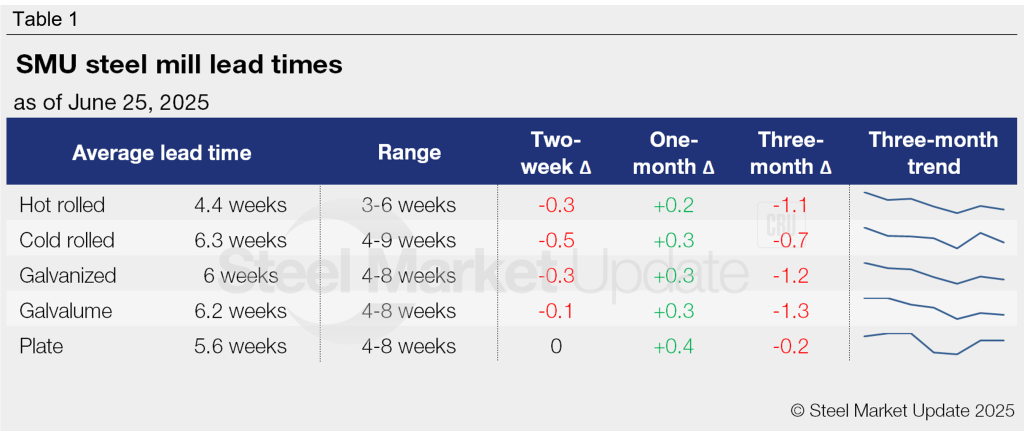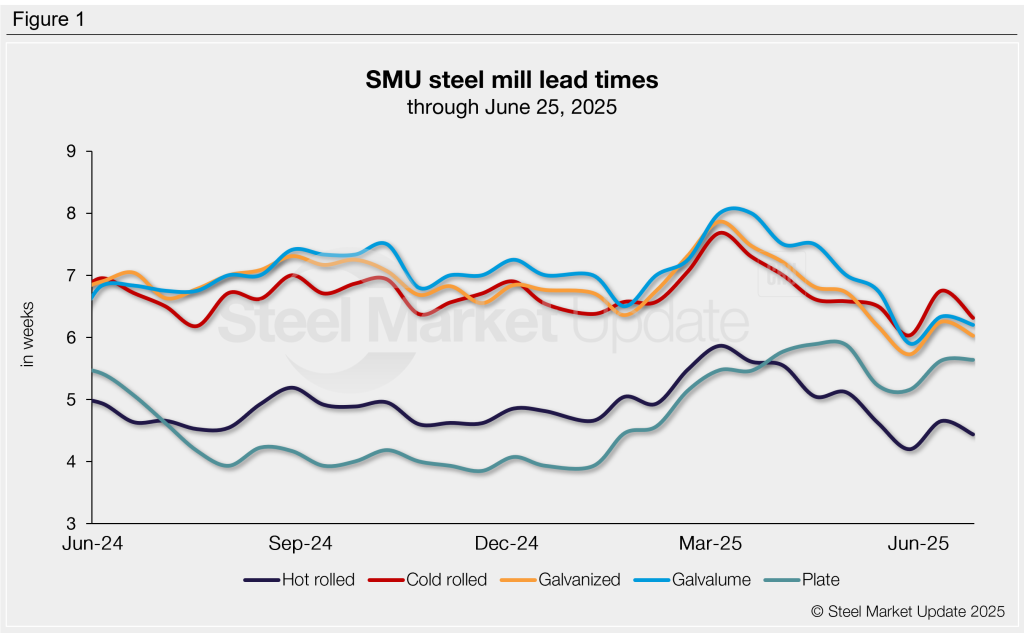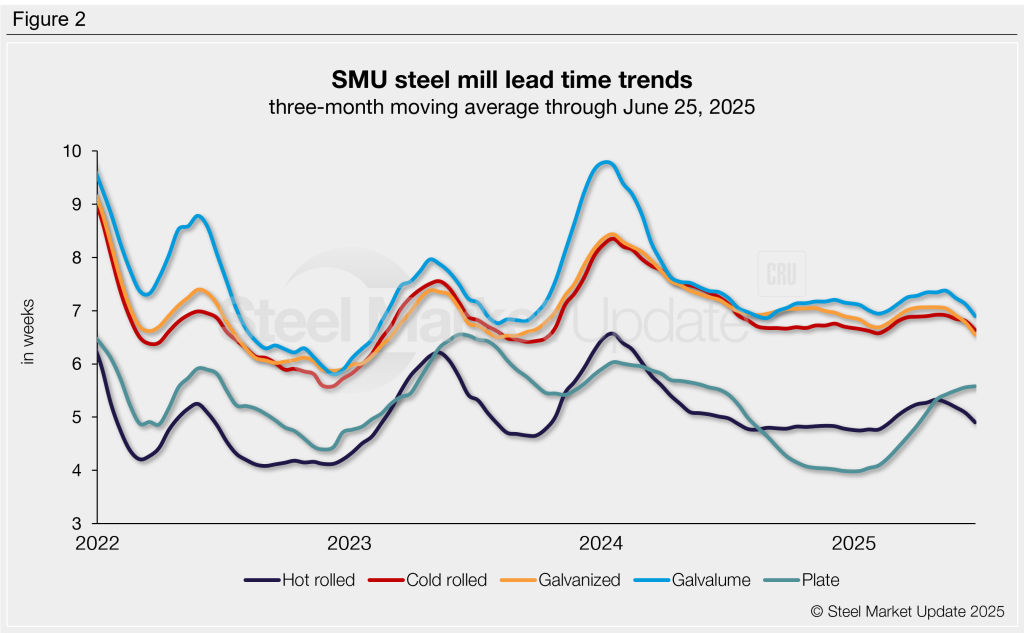Analysis

June 26, 2025
SMU Survey: Sheet lead times pull back after early-June blip, plate holds
Written by Brett Linton
Following the uptick seen two weeks ago, lead times eased this week for all four sheet products tracked by SMU, while plate lead times held steady, according to steel buyers responding to this week’s market survey.
Prior to June, sheet production times had shortened from early April through late May, with most products falling to lows not seen in over two years. Plate times also declined throughout May, hitting a three-month low by month’s end. Although production times extended across the board in early June, sheet lead times remained near some of the shortest levels recorded since late 2023.
The average lead time for hot-rolled coil this week is just under four and a half weeks. Cold-rolled and coated products are between six to six and a half weeks. Plate remains at just over five and a half weeks.
Table 1 summarizes current lead times and recent changes by product (click to expand)

Compared to our previous market check, lead time ranges for two of our five products changed this week:
- Cold rolled: The shortest lead time declined from five weeks to four.
- Galvanized: The shortest lead time declined from five weeks to four, while the longest lead time rose from seven weeks to eight.

Buyers continue to forecast stability
Nearly three quarters of buyers (74%) expect lead times to hold steady over the next two months, the same consensus seen since late May. Of the remainder, 18% anticipate lead times will extend, similar to early-June but more than double the 9% rate seen one month ago. Just 8% expect further contractions, consistent with two weeks ago but down from late May (18%).
Here are some of the comments we collected:
“Flat, too much open, domestic capacity and unilateral trade deals will continue to get hashed out.”
“Plenty of domestic capacity in a market that is struggling (demand-wise).”
“I see too little demand for lead times to meaningfully increase.”
“Extending. The distribution segment has been holding off on buying due to uncertainties in the market.”
“Flat, no impetus for upping capacity.”
“Contracting in two months after pushing out over the next month.”
Sheet trending lower, plate stabilizes
To better highlight trends and smooth out survey-to-survey fluctuations, lead times can be calculated on a three-month moving average (3MMA) (Figure 2). All of our sheet 3MMAs declined this week for the fourth-consecutive survey, while plate stabilized after steadily climbing across the past five months.
Over the past three months, the average lead times by product were: hot rolled at 4.9 weeks, cold rolled at 6.6 weeks, galvanized at 6.5 weeks, Galvalume at 6.9 weeks, and plate at 5.6 weeks.

Note: These lead times are based on the average from manufacturers and steel service centers participating in this week’s SMU market trends analysis survey. SMU measures lead times as the time it takes from when an order is placed with the mill to when it is processed and ready for shipping, not including delivery time to the buyer. Our lead times do not predict what any individual may get from any specific mill supplier. Consult your mill rep for actual lead times. To see an interactive history of our steel mill lead times data, visit our website. If you’d like to participate in our survey, contact us at info@steelmarketupdate.com.







